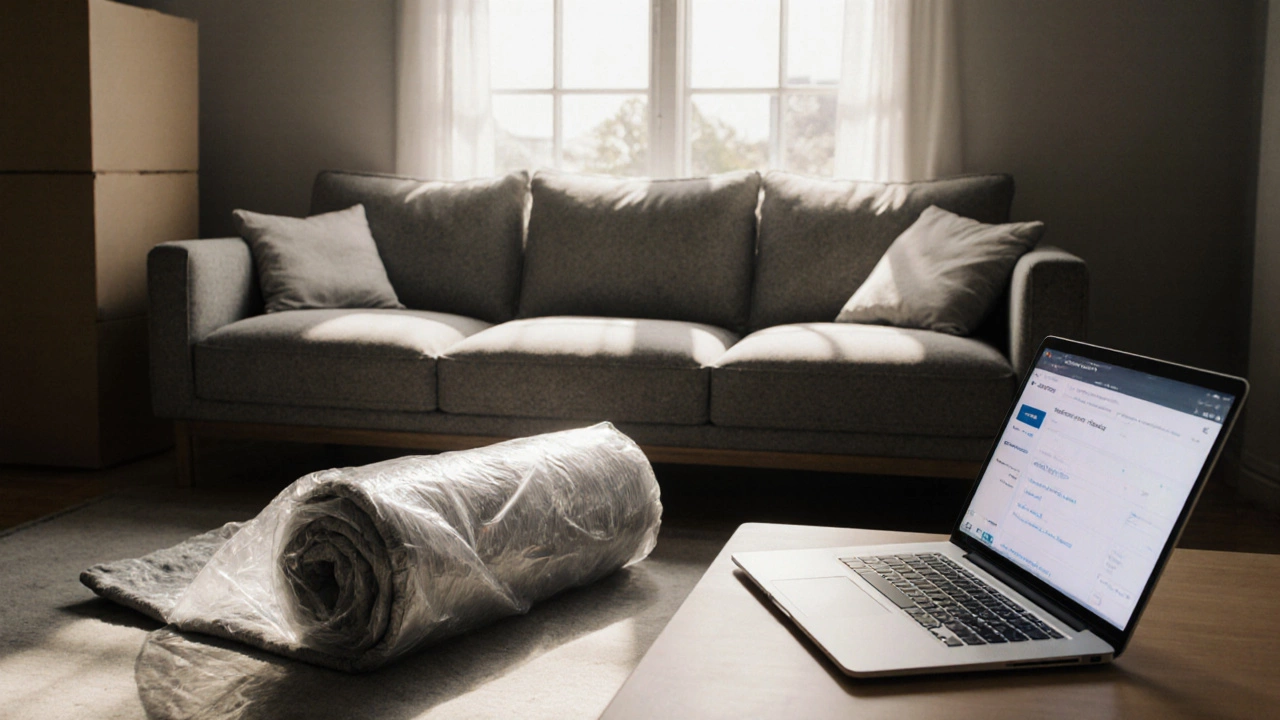
Should I Wrap My Couch in Plastic for Storage? Pros, Cons & Best Practices
Learn when plastic wrap helps or harms couch storage, compare protective options, and follow a step‑by‑step guide to keep your sofa safe for months.
Planning a move? You’ve probably thought about boxes, tape, and a truck, but what about the stuff that actually touches your furniture? Moving blankets are the unsung heroes that stop scratches, dents, and dust from ruining your prized pieces.
In plain terms, a moving blanket is a thick, padded fabric cover—usually made of cotton, polyester, or a blend—designed to wrap around sofas, tables, and appliances. They come in various thicknesses, from lightweight 1‑inch pads for short trips to heavyweight 3‑inch versions for long hauls. Because they’re reusable, they’re cheaper in the long run than bubble wrap or foam.
First, think about the size of the item you’re protecting. A small coffee table needs a 48‑inch blanket, while a sectional sofa may need a 96‑inch one. Next, consider thickness: heavier blankets absorb more impact, but they’re bulkier to store. Finally, check the material—cotton feels softer on delicate surfaces, while polyester resists moisture better.
If you’re on a budget, buying a mixed pack of different sizes often works best. Many suppliers sell bundles that include a few small, medium, and large blankets, giving you flexibility without over‑ordering.
Pro tip: Ask the retailer about a warranty. Some companies replace damaged blankets within a set period, which can be handy if you’re moving multiple times a year.
Now that you have the right blanket, here’s how to use it effectively.
1. Lay the blanket flat on the floor or a clean surface. Make sure it’s fully unfolded—no folds that could create pressure points.
2. Center the item on the blanket. For a dresser, place the top in the middle; for a couch, align the back along the blanket’s length.
3. Pull the edges up and wrap them around the piece, tucking the corners snugly. Use a stretch wrap or packing tape to keep the blanket from slipping, but avoid taping directly to the furniture surface.
4. Secure with straps if you have them. Straps keep the blanket tight during loading and unloading.
When stacking boxes or other items on wrapped furniture, place a thin cardboard sheet between them to prevent the blanket from crushing or shifting.
After the move, you’ll want to clean the blankets. Most are machine‑washable—just use a gentle cycle, cold water, and avoid fabric softener, which can reduce their padding.
Dry them on a low heat setting or hang them outside. If you notice a blanket is losing its fluff, consider recycling it; many moving companies accept old blankets for reuse.
Finally, remember to store your blankets properly for the next move. Fold them loosely and keep them in a dry, breathable bag. Storing them in a sealed plastic bag can trap moisture and lead to mold.
Using moving blankets isn’t just about protection; it’s about peace of mind. Knowing your sofa will arrive without a scratch lets you focus on the excitement of setting up your new space. So next time you plan a move, add moving blankets to your checklist—you’ll thank yourself when everything looks as good as new.

Learn when plastic wrap helps or harms couch storage, compare protective options, and follow a step‑by‑step guide to keep your sofa safe for months.